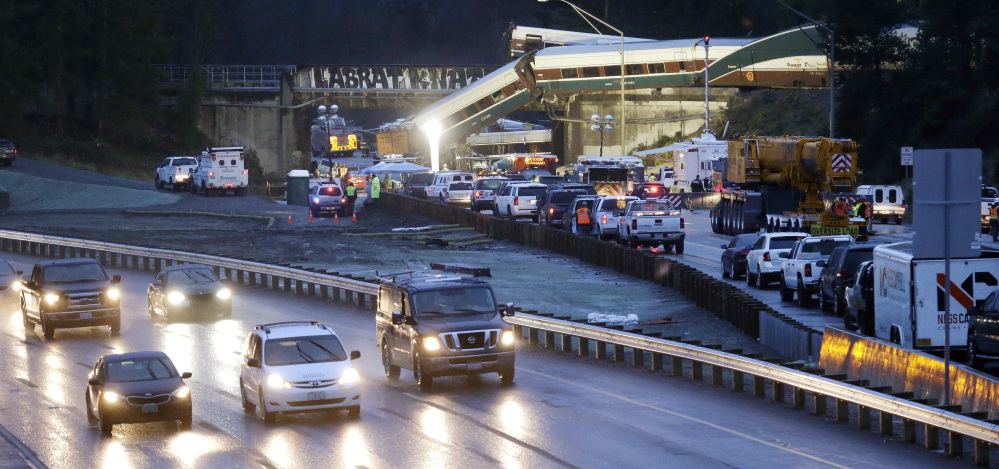SEATTLE — A community along the new rail line where an Amtrak train derailed Monday in a deadly crash had tried to stop the project on grounds that higher-speed passenger trains would endanger pedestrians and motorists.
The city of Lakewood, several miles north of the crash site, went to court in 2013 to stop the Point Defiance Bypass project, which redirected passenger trains from a curvy route along Puget Sound that competes with freight traffic and squeezes through single-track tunnels where only one train can go through at a time.
Opponents said the route, which shortened the trip between Portland, Oregon, and Seattle, would expose car and pedestrian traffic to faster trains at more than a half-dozen street-level crossings in Lakewood. City officials asserted the state transportation department’s environmental review of the new route was inadequate and failed to consider traffic, neighborhood and other impacts.
In March 2014, a judge dismissed the lawsuit and the $181 million track upgrade moved forward. Until now, the route was used by freight trains.
Early Monday, during the first run of the new passenger service, 13 of the 14 cars went off the tracks at an overpass, some tumbling onto Interstate 5.
Even people who tried to stop the new route on safety grounds said a derailment wasn’t a concern.
“These are new, upgraded tracks – that’s what is so surprising about this,” said John Niles with the Coalition for Effective Transportation Alternatives, which joined local elected officials in opposing the project. “They weren’t worried about a train derailing.”
At least three people on board were killed, local authorities said, contradicting a U.S. official briefed on the investigation who said that at least six were dead. The official had no information to explain the discrepancy.
The track is owned by Sound Transit, the public transit system for the Seattle area, which oversaw the upgrades and did extensive testing prior to Monday’s public opening, agency spokeswoman Kimberly Reason said.
While it will take investigators months to determine the precise cause, speed may have been a factor.
Moments before the derailment, the train was going 81.1 mph, according to transitdocs.com, which maps train speeds using data from Amtrak’s train tracker app.
The maximum speed drops from 79 mph to 30 mph for passenger trains just before the tracks curve to cross Interstate 5, according to a track chart prepared by the Washington State Department of Transportation.
Another Sound Transit spokeswoman, Rachelle Cunningham, confirmed the maximum allowable speed was 30 mph at the derailment point but could not say where that lower limit began.
Send questions/comments to the editors.



Success. Please wait for the page to reload. If the page does not reload within 5 seconds, please refresh the page.
Enter your email and password to access comments.
Hi, to comment on stories you must . This profile is in addition to your subscription and website login.
Already have a commenting profile? .
Invalid username/password.
Please check your email to confirm and complete your registration.
Only subscribers are eligible to post comments. Please subscribe or login first for digital access. Here’s why.
Use the form below to reset your password. When you've submitted your account email, we will send an email with a reset code.